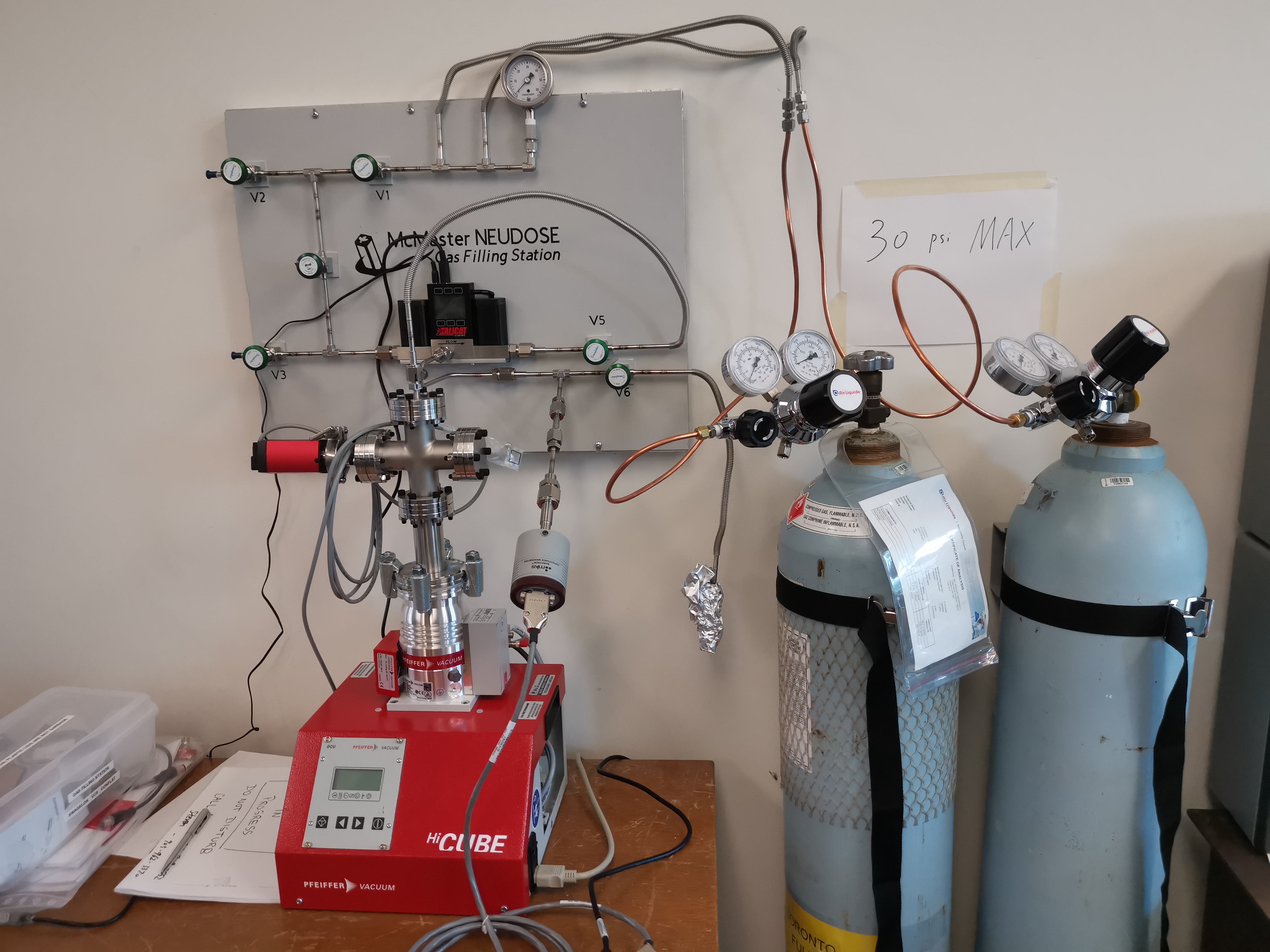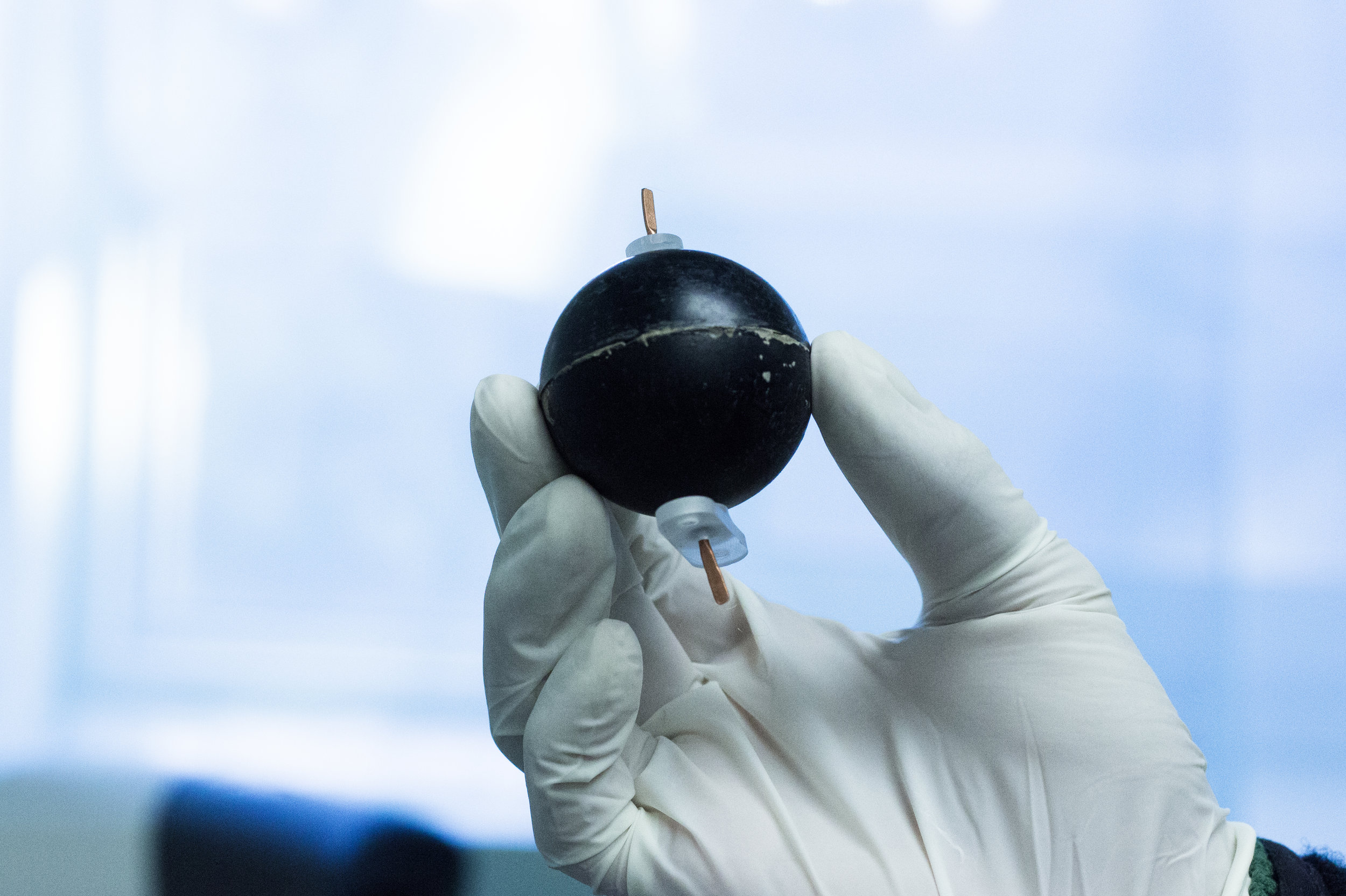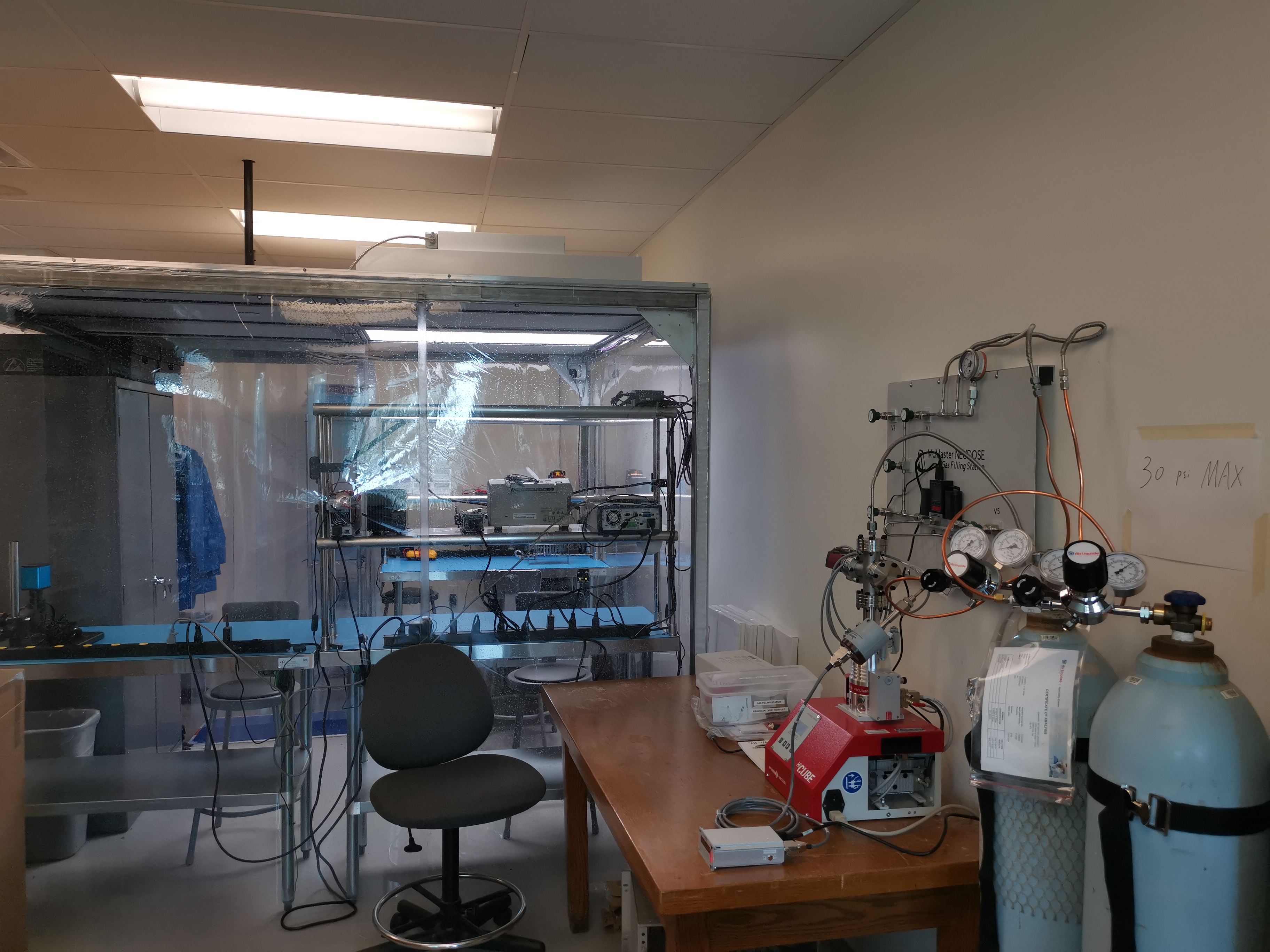NEUDOSE and McMaster’s Nuclear Operations & Facilities collaborate on CubeSat technology

NEUDOSE and McMaster’s Nuclear Operations & Facilities (NO&F) are working together to bring McMaster’s 1st satellite one step closer to space.
Composed of students from the Faculties of Science, Engineering, Commerce, and Humanities, McMaster’s Neutron Dosimetry and Exploration (NEUDOSE) team has been developing a cube satellite (CubeSat) that will help scientists better understand the effects of ionizing radiation on the human body.
The satellite contains a Charged & Neutral Particle Tissue Equivalent Proportional Counter (CNP-TEPC) – a device that simulates the human cell and provides valuable information about the radiation environment in low-Earth orbit (LEO). Measurements from the CNP-TEPC enable researchers to predict the radiation doses astronauts will receive when in LEO, helping protect astronauts from health risks associated with long-term exposure to space radiation, like cancer and cataracts.
McMaster professors and NEUDOSE Principal Investigators, Dr. Andrei Hanu and Dr. Soo Hyun Byun have been working with staff from McMaster’s Nuclear Operations & Facilities unit to design and build a gas-filling system for the CubeSat’s proportional counter.
“The tissue equivalent proportional counter, or TEPC for short, is the central detector of our CNP-TEPC instrument and enables us to measure the radiation dose astronauts receive when in low-Earth orbit,” says Dr. Hanu.
“To perform the measurements, the TEPC must be filled with a high purity gas mixture consisting of propane, carbon dioxide, and nitrogen. The TEPC must also be leak-free while in orbit. Staff at McMaster’s nuclear facilities have provided us with the unique resources and expertise we need to build a gas-filling system for this technology.”

McMaster University is home to a suite of world-class nuclear research facilities, anchored by the McMaster Nuclear Reactor – the world’s leading supplier of medical isotope iodine-125. Using a process designed, developed, and commercialized at NO&F, reactor staff expose enriched Xenon-124 gas to neutrons in the reactor core, converting it first to Xenon-125, and then Iodine-125, which they chemically separate from the xenon. NO&F’s Technical Services team are applying the same technology used in the production of Iodine-125 to design and fabricate a gas-filling system for NEUDOSE’s TEPC.
The TEPC will be filled with an enriched propane gas that has a similar elemental composition to human tissue. NO&F’s Technical Services team are building a system that purges the counter of other gases and fills it with propane gas. To accomplish this, the system employs a high vacuum pump to extract atmospheric gases from the counter. The system then applies heat to encourage the release of any residual gas molecules. Finally, the system allows propane gas to flow into the counter up to a determined pressure level.

“The gas mixture must have the same elemental composition as soft tissue,” says Dr. Byun. “By choosing a proper filling pressure, we can make the energy deposited by radiation in the TEPC gas volume match the energy deposited in a micrometric volume of tissue.”
“The distribution of the energy deposition in such a micrometric scale of tissue is the primary radiation physics information for understanding radiation exposure effects. Moreover, different types of radiation produce different patterns of the deposited energy distribution, which will enable us to analyze the type of radiation and the dose rate of each radiation type as the NEUDOSE TEPC continues to collect data after launch. The high purity gas-filling system will play a vital role in the accuracy and quality of the radiation interaction data that the NEUDOSE satellite will collect in the space.”

When launched into space aboard the NEUDOSE CubeSat, the TEPC will characterize the radiation environment in LEO in real time, tracking exposures to both non-ionizing and ionizing radiation. The data collected by the device will allow the NEUDOSE team to better understand how charged and neutral particles contribute to the radiation doses incurred by astronauts during space missions. In doing so, the NEUDOSE mission will contribute to the global goal of sending humans to Mars.
“Nuclear Operations & Facilities is excited to be working with NEUDOSE to build a piece of technology that will ultimately support the health and well-being of astronauts doing important work in space,” says Ross Harper, NO&F’s Manager of Technical Services.
“Additionally, this project has given us an opportunity to train a new generation of co-op students in fabrication skills typical of those needed in the nuclear industry.”
The NEUDOSE CubeSat is expected to be launched from the International Space Station in January 2023.
Education, News, Nuclear